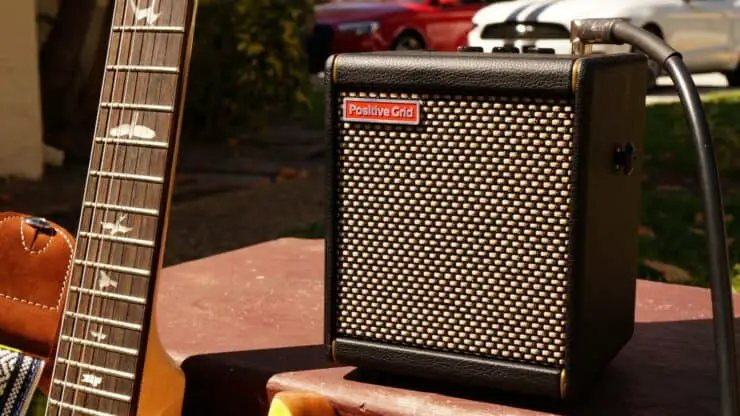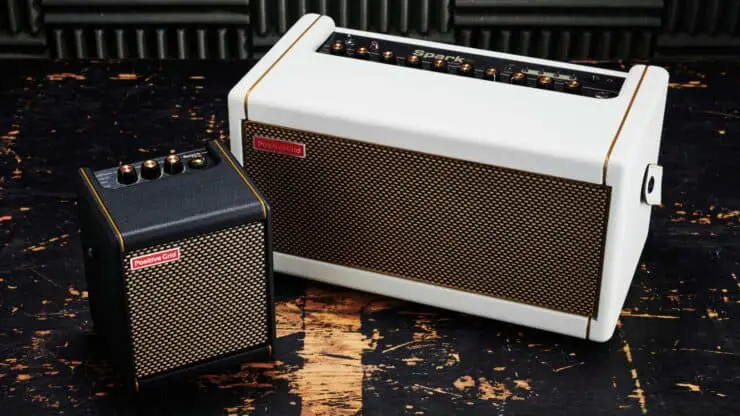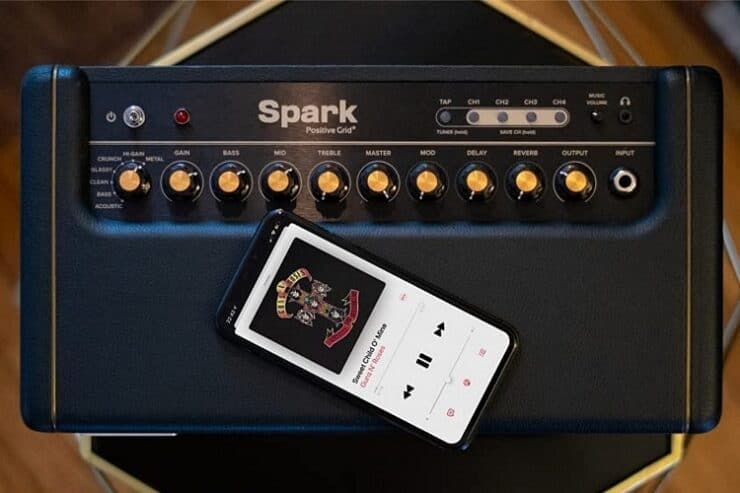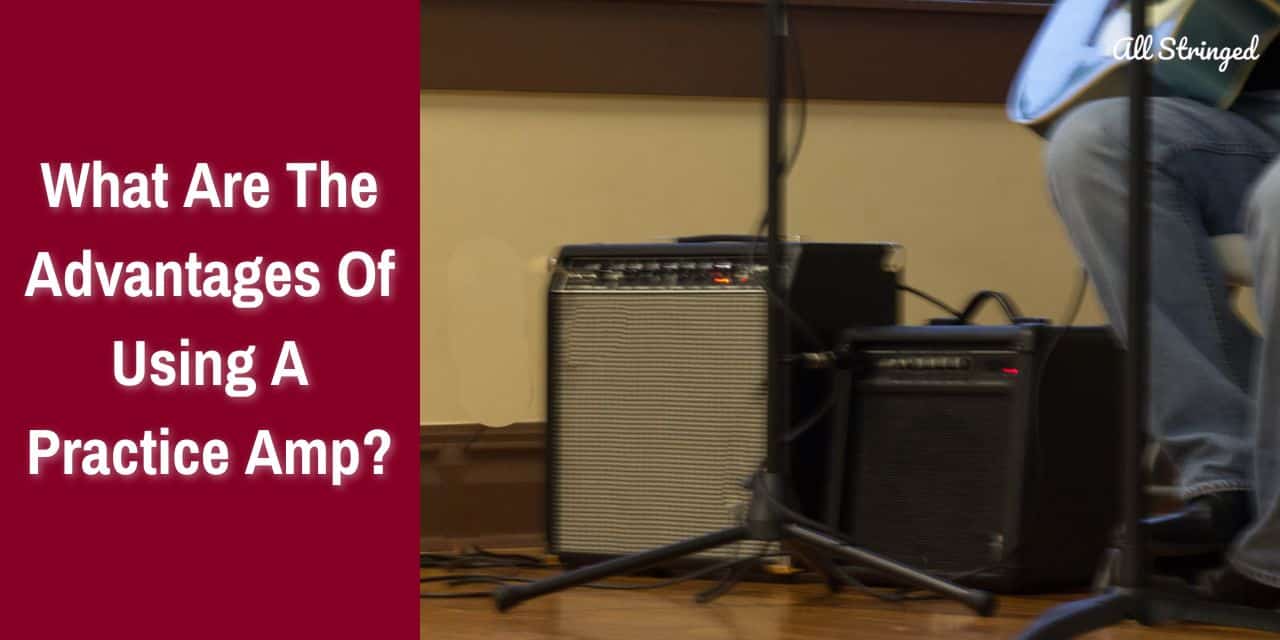Are you looking for ways to take your guitar playing to the next level? Do you want to make sure you’re always ready to perform? Using a practice amp is a great way to do just that. Practice amps are incredibly versatile, easy to use, and can help you get better at playing guitar. In this article, we’ll explore the advantages of using a practice amp, so you can decide if it’s right for you. Let’s get started!
What is a practice amp?
As a beginner, practicing is an essential part of being a musician or a guitarist. The more you practice, the more improvement you will see in your ability. It isn’t possible for every guitarist to use a typical studio guitar amp in their studio or apartment for practicing. This is where a practice amp comes in handy and saves the day.
Definition of practice amp
A practice amp is a type of guitar amp that is designed for use in the home or practice studio. These amps are typically smaller and less powerful compared to recording guitar amps. They’re meant to offer a basic, no-frills sound for musicians looking to practice and improve their skills. Practice amps generally come with a simple design with few built-in effects and a single speaker. They might also include headphone jacks, which allow the players to practice without disturbing others in the vicinity.
A practice amp will allow you to practice in a controlled environment without needing a large, expensive amp. This is especially important for beginners and novices who might not have the budget or space for a large recording amp. They are typically portable and lightweight, which makes them extremely easy to transport to lessons, gigs, and other events. This allows musicians to practice and perform in a variety of settings without needing to invest in multiple amps or equipment. Further, they are also more affordable compared to recording amps. This can make them such a great choice for musicians who are on a tight budget.
ALSO READ: Best Practice Amp: Top 7 Picks to Play Anywhere!
Different types of practice amps
For guitarists who want to practice playing guitar at home, there are different types of practice guitar amps that you can choose from. Each type of practice amp comes with its own strengths and weaknesses, so it’ll be important to understand the difference between them to find the best fit for your needs.

#1. Solid-state amps
Solid-state amps make use of transistors for amplifying the signal from the guitar. They’re typically smaller and lighter compared to other types of amps, which makes them such a great choice for practicing at home. They are also less expensive compared to other types of amps, which makes them such a good option for beginners. These types of practice amps are known for their clean, clear sound, but they might not offer the same warmth and character as other types of amps.
#2. Tube amps
Tube amps use vacuum tubes for amplifying the signal from the guitar. They are known for their warm, natural tone, which is why they’re often used by professionals. Tube amps happen to be more expensive and heavier than solid-state amps, but many guitarists prefer the sound they produce. Tube amps need more maintenance compared to solid-state amps, as the tubes have to be replaced periodically.
#3. Modeling amps
Modeling amps make use of digital technology for simulating the sound of other types of practice amps. They often come with presets and built-in effects that allow guitarists to experiment with different sounds and styles. Modeling amps are a great choice for guitarists who want to explore different sounds without needing to invest in multiple amps.
#4. Hybrid amps
Hybrid amps are the type of practice amps that combine the best features of solid-state and tube amps. They use both vacuum tubes and transistors for amplifying the signal, resulting in a unique, hybrid sound. Hybrid amps happen to be more expensive compared to solid-state amps but less expensive than tube amps.
#5. Portable amps
Portable amps are rather lightweight and designed to be easy to transport. They are either battery-powered or feature a rechargeable battery, which makes them a viable option for guitarists who want to practice on the go. Portable amps might not have the same power or sound quality as other types of amps; however, they’re a more convenient option for practicing in different locations.
Advantages of using a practice amp
Practice guitar amps are a tremendous investment for any guitarist or musician, whether they are a beginner or a seasoned veteran. They also offer a wide variety of advantages over bigger studio amps. Here are some of the biggest advantages of using a practice amp for your guitar sessions –
#1. Portability
One of the major advantages of practice amps is their portability factor. Practice amps are generally smaller and lighter compared to larger studio amps, which makes them extremely easy to transport from one location to the other for gigs, rehearsals, or practicing. They are designed to be easily portable and come equipped with straps or handles for easy carrying. This means that you can take your practice amp with you wherever you go, whether you’re practicing at a friend’s house, in the studio, or on stage. This can be hugely beneficial for musicians who have to travel frequently, since you can carry it and transport it in a car or even on a plane.
#2. Versatility
Practice amps come in a wide variety of styles and models, with each one having its own set of features, capabilities, and built-in effects. This makes them such a versatile tool for any guitar player. Some practice amps are also designed to be able to replicate the sound of larger amps, whereas others come equipped with built-in effects and preset that allow you to experiment with different styles and sounds. The versatility factor will allow you to explore different sounds and techniques without needing to invest in multiple amps.
#3. Cost-effectiveness
Another major advantage of practice amps is their cost-effectiveness. Practice amps are generally less expensive than larger amps, which makes them an extremely cost-effective option for any budget. They are less expensive compared to larger amps, which makes them a viable option for musicians on a budget. Despite the low price, many practice amps offer high-quality sound and components capable of rivaling larger and more expensive amps. The models also feature high-quality components and sound. This means you’ll be able to get an amazing sound practice amp without needing to break the bank.
#4. Amazing for practice
As the name suggests, practice amps are essentially designed for practicing. They have lower wattage compared to larger amps, which makes them a better option for bedroom or apartment practice. They also have headphone jacks that allow you to practice quietly without disturbing others in your apartment or neighbors around you.
#5. Recording
Practice amps are also tremendous for recording. Many practice amp models come with direct recording capabilities, which means you’ll be able to plug them directly into the recording interface or computer and record your guitar tracks without any additional equipment.
#6. A beginner-friendly option
For beginner guitarists, practice amps will be a great option. They are quite easy to use and generally have simple controls that allow you to easily adjust the tone, volume, and gain. They also offer a tremendous way to learn the right way to use effect pedals and other accessories as a beginner.
How to choose a practice amp?
If you are in the market, it can be tough to find the perfect practice amp if you don’t know where to look. Choosing the right amp can greatly enhance your practice experience and help you develop your skills as a guitarist. When it comes time to choose a practice guitar amp, there are various factors that you’ll need to consider to make sure that you find the perfect amp that suits your specific needs. Here are some of the key factors that you should keep in mind when choosing a practice amp –
#1. Appropriate power rating for your needs
The power rating of a practice guitar amp refers to how much power it can output or how loud it can get. Practice guitar amps generally range from 5W to 30W. For practicing purposes, a lower power rating will be more than enough. A 5W to 10W amp will be good enough for most home practice sessions. Lower-wattage amps are suitable for bedroom practice whereas higher-wattage amps will be better for playing in small gigs or rehearsals. It’ll be important that you consider your specific needs and the spaces you will be playing in when selecting a practice amp with the appropriate power rating.
#2. Ideal speaker size
The size of the speaker in your practice amp will play a critical role in determining the overall sound quality of your guitar. A larger speaker will generally produce a fuller sound, whereas a smaller speaker will be more focused. Smaller speakers like 8-inch to 10-inch speakers are common for practice amps, and they produce a tighter sound that is perfect for genres like metal. Meanwhile, larger speakers like 12-inch to 15-inch are capable of producing a more open sound that is better suited for blues or jazz. It is important to consider your specific needs and playing style when choosing a speaker size.
#3. Enough tone controls
The tone controls on your practice guitar amp will allow you to shape and adjust the sound of your guitar by adjusting the bass, mid, and treble frequencies. Most practice amps come with a rather basic set of tone controls including bass, mid, and treble. However, some models also offer advanced tone-shaping features, EQ presets, and built-in effects that allow the guitarist to fine-tune their sound to perfection.
#4. A wide range of effects
Many practice amps come with built-in effects like reverb, chorus, delay, and distortion. While these effects can be quite fun and help you achieve different sounds and styles without needing to invest in additional pedals or equipment, they might not be a necessity for a practice amp. However, it’ll be important to note that not all practice amps come with different effects, and those that have them might not have the full range of effects that you need. As a beginner, you’ll want to consider whether you really require these features or you’ll be better off with a simpler amp.
#5. Connectivity options
Your amp needs to be able to connect to other devices such as a PC or phone. This is why many practice amps offer multiple inputs or outputs for connecting to other devices. The connectivity options will allow you to play along with backing tracks or record your guitar tracks. You should look for practice amps that come with built-in USB ports or an aux imp that allow you to connect your devices easily and play along with your favorite songs or headphone output for quiet practice settings.
#6. Your budget
Practice amps are largely less expensive compared to larger amps that are designed for live performances. However, prices can vary depending on the features and quality of the amp. You must determine your budget before you shop and prioritize the features that are most important to you.

Disadvantages of using a practice amp
Practice guitar amps are small, portable amps that are designed for guitarists for practicing and rehearsing in the comfort of their homes. While they do offer many advantages, like convenience, affordability, great for practice sessions, and more, they also come with a few disadvantages that you must consider before making the purchase.
#1. Limited power control
One of the major disadvantages of practice guitar amps is their limited power output. These amps typically come with lower wattage, which means that they do not have the same tone and volume as larger amps. This can be a major issue for guitarists who wish to play in a band or perform on stage, as they might not be able to achieve the desired sound or volume.
#2. Less versatility compared to studio amps
Another major disadvantage of most practice amps is their lack of versatility in terms of tone and effects compared to studio amps. While some practice amps come with built-in effects like reverb and distortion, they often do not have as many options as larger amps. This can be somewhat limiting for guitarists who want to experiment with different sounds and effects.
#3. Lack the durability of larger studio amps
Another major disadvantage is that practice amps tend to lack the durability of larger studio amps. They are typically made using cheaper materials and the components are not as high quality. This means that they might not last as long as larger amps and might have to be replaced more frequently.
#4. Not enough connectivity options as studio amps
Another drawback of practice amps is the lack of connectivity options compared to studio amps. While some practice amps have inputs for headphones or auxiliary devices, they might not have as many options as larger amps. This can be quite frustrating for guitarists who wish to connect their amp to a computer or other devices for recording or playback.

Tips for using a practice amp
Setting up a dedicated practice space for your guitar playing and experimenting can be a great way of improving your skills and experimenting with different sounds. However, to get the most out of your practice sessions, it’ll be important to keep a few key factors into consideration. Here are a few tips for setting up your practice space, adjusting the volume, and experimenting with different sounds when practicing with a practice amp –
Setting up your practice space
- Choose a dedicated area – Make sure that you choose a space where you can focus on your playing without any interruptions. Try to choose a quiet area in your home where you can shut the door and spend some time practicing alone with your guitar.
- Get comfortable – Make sure that you have a comfortable chair or pavement to shit on when you are practicing. This will help you maintain good posture and avoid any strain or injury.
- Keep the equipment organized – You must set up the practice amp, guitar, and any pedals or other accessories that you’re using in a neat and organized manner. This will help you stay focused and avoid any distractions.
Adjusting the volume
- Start low – When you first start practicing, it’ll be a great idea to keep the volume low. This will help you ensure that you don’t disturb others in your home and prevent potential hearing damage.
- Experiment with different levels – As you become more and more comfortable playing, you should experiment with different volume levels to find the one that works best for you. Some players prefer playing at a higher volume, whereas others find that a lower volume will help them hear their playing more clearly.
- Use headphones – If you have to practice at a higher volume but do not want to disturb others, you should consider using headphones. Many practice amps come with a headphone jack that allows you to plug in your headphones and play without creating any noise.
Experiment with different sounds
- Try different settings – Many practice amps these days come with built-in tone controls and effects that allow you to experiment with different sounds. You should try to adjust the bass, treble, and midrange settings to find the tone that works best for your sound and your playing style.
- Use pedals – If you’ve got any pedals or other effects, you should try to experiment with them to create different sounds. Start off with simple effects like distortion or overdrive. Gradually work your way up to more complex effects like reverb or delay.
- Practice different styles – You shouldn’t be afraid to experiment with different styles of music when you’re practicing. Try playing blues, jazz, rock, or any other music genre that interests you to help develop your skills and explore new sounds.
- Use a metronome – Practicing with a metronome will help you improve your timing and keep you on the beat. Start off with a slow tempo and gradually increase it as you start getting more comfortable.
- Record yourself – Recording yourself while playing can help you identify different areas where you need to improve on. You can also listen back to the recordings to track your progress over time.
- Practice regularly – Consistent practice will be key to improving your guitar skills. Try to practice for at least 30–45 minutes every day or a few times per week.
- Take breaks – It is important to take short breaks during your practice sessions to give your hands and ears a rest. Stretch your hands and then take a few deep breaths to keep yourself relaxed.
FAQs
What are the advantages of using a practice amp?
A: Using a practice amp has several advantages, including its portability, lower volume levels, and ease of use. Practice amps also typically come with headphone jacks, allowing for silent practice. This makes them ideal for practicing at home or in other environments where a full-sized amplifier may not be suitable. Other advantages include affordability, durability, and convenience.
What are the differences between practice amps and regular amplifiers?
A: Practice amps are designed specifically for practicing and typically have lower wattage, smaller speaker size, and simpler controls compared to a regular amplifier. Practice amps are more compact and portable, making them ideal for use at home or on the go. Regular amplifiers, on the other hand, are designed for performance and often have higher wattage, larger speaker size, and more advanced features.
What should I look for when buying a practice amp?
A: When buying a practice amp, you should consider the type of guitar and playing style, volume and tone control, power and speaker size, budget, available space for storage, and portability needs. It’s important to find the right balance of these factors to ensure you get an amp that meets your needs and provides a great playing experience.



